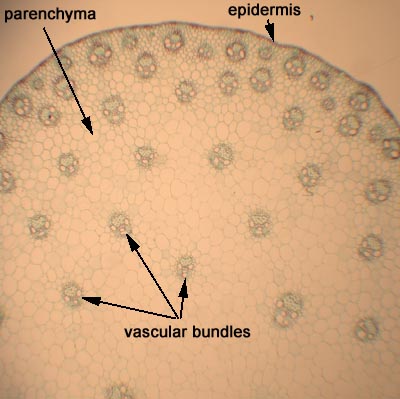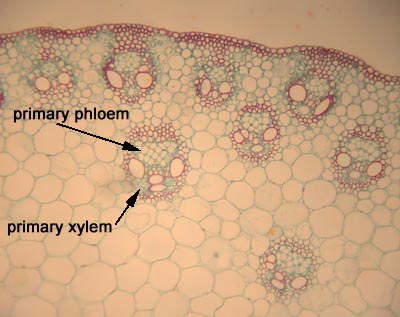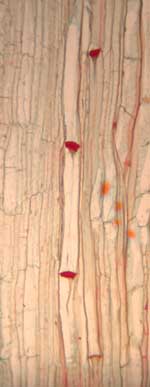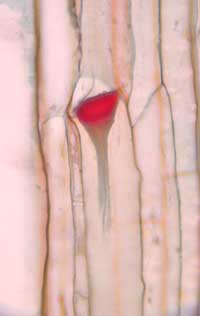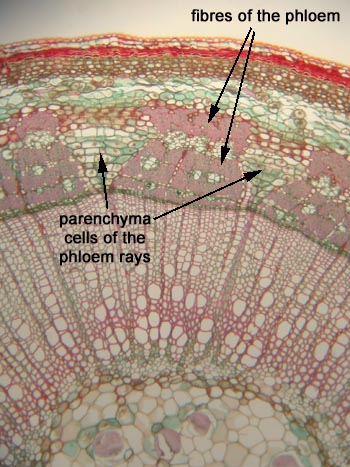Phloem Tissue
Phloem is the major food conducting tissue in vascular plants. It is complex tissue made up of a number of cell types including sieve elements, parenchyma and fibres. Sieve elements are the primary conducting cells. There are two types of sieve elements: sieve cells and sieve tube members. Sieve cells are found in gymnosperms and seedless vascular plants. They are closely associated with specialized parenchyma cells called albuminous cells. Sieve tube members are found in the angiosperms. They are closely associated with companion cells (a type of parenchyma cell).
SIEVE TUBE MEMBERS, COMPANION CELLS
Zea (corn)
Here is a cross-section through a corn stem. You can see the vascular bundles scattered throughout the ground tissue.
Here is a closer look at the vascular bundles. Within a vascular bundle phloem is most often situated closer to the outside of the plant than the xylem.
This is a cross-section through a vascular bundle of corn. The larger cells are part of the xylem. The phloem tissue is found between the large xylem vessels which look like eyes in the “forehead” region. You can see the larger sieve elements (sieve tube members) and the smaller companion cells of the phloem. Unlike some cell types in xylem, all phloem cells except fibres are alive at maturity, though sieve tube members may lack a nucleus.
Cucurbita
Here is a longitudial section through the phloem. Most cells are thin-walled and not as easily visualized as the xylem. The main conducting cells, the sieve elements, are elongate as you can see here.
Sieve elements are often identified in slides by having slime plugs which form at the ends of the cells. This is an artifact of the preparation of the plant material. Upon injury, slime plugs form to prevent the contents of the sieve elements from leaking out of the plant.
FIBRES
Tilia (basswood)
There are wide bands of fibres in the phloem of this plant.

